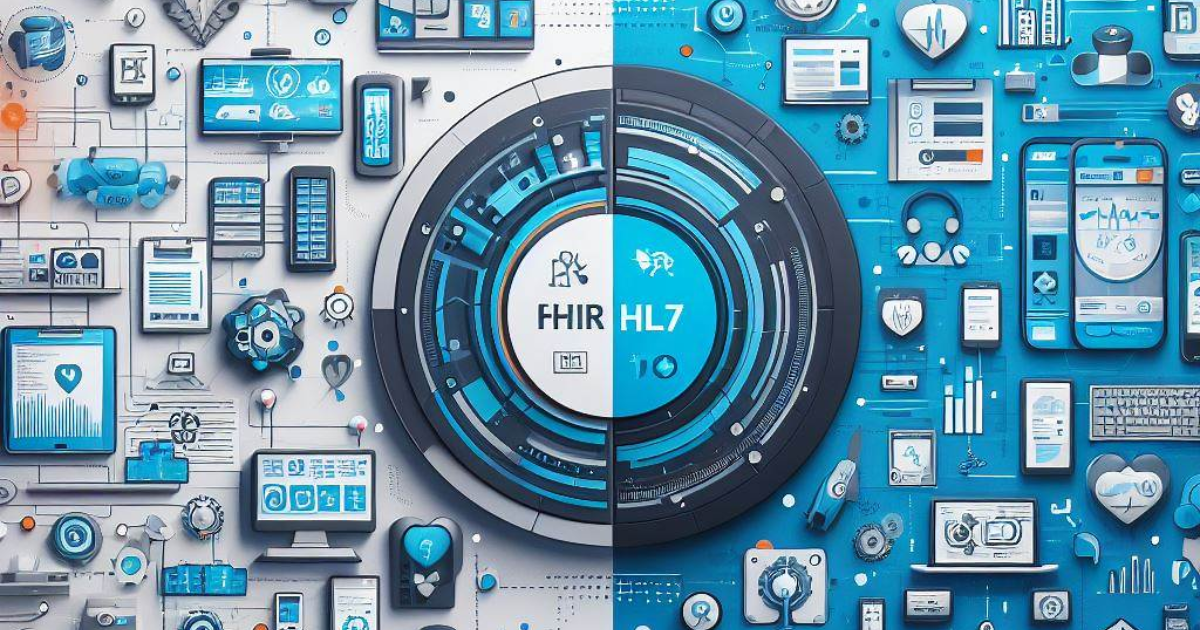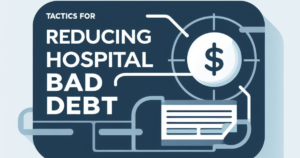Sharing is caring!

When embarking on a healthcare project, it is crucial to select the appropriate standard for seamless data exchange. This article explores the decision-making process between two prominent standards, FHIR and HL7, offering insights to help you determine the perfect fit for your healthcare project.
1. Key Differences between HL7 and FHIR
HL7 (Health Level Seven) and FHIR (Fast Healthcare Interoperability Resources) are both standards used in healthcare interoperability, but they differ in several key aspects. HL7 is a set of standards that define the structure and format of healthcare data exchange messages, while FHIR is a modern, web-based standard that focuses on providing a more flexible and user-friendly approach to data exchange. HL7 is based on a complex messaging model, whereas FHIR utilizes a resource-based model, making it easier to access and exchange specific data elements. FHIR also supports RESTful APIs and JSON/XML formats, enabling seamless integration with modern technologies and systems.
2. Impact of HL7 and FHIR Standards on Healthcare Interoperability
The adoption of HL7 and FHIR standards has had a significant impact on healthcare interoperability. These standards have promoted the seamless exchange of healthcare data between different systems, allowing healthcare providers to access and share patient information more efficiently. By standardizing data formats and structures, HL7 and FHIR have improved the accuracy and reliability of data exchange, reducing errors and enhancing patient care coordination. These standards have also facilitated the integration of healthcare systems with other technologies, such as mobile apps and wearables, enabling better patient engagement and remote monitoring.
3. Common Usage of HL7 and FHIR in Healthcare Projects
Both HL7 and FHIR are widely used in various healthcare projects. HL7 is commonly used in legacy systems and traditional healthcare environments, where the focus is on exchanging structured messages between different systems. It is often utilized for tasks such as patient registration, scheduling, and laboratory results reporting. On the other hand, FHIR is gaining popularity in modern healthcare projects that require more flexible and user-friendly data exchange. It is often used for tasks such as patient data access, interoperability with mobile health applications, and integration with electronic health record (EHR) systems.
4. Advantages and Disadvantages of HL7 in Comparison to FHIR
HL7 has been a widely adopted standard for healthcare data exchange for many years, and it offers several advantages. It has a well-established and mature ecosystem, with a large community of developers and vendors supporting it. HL7 also provides a comprehensive set of messaging standards, allowing for complex data exchange scenarios. However, HL7 has some disadvantages, such as its complexity and steep learning curve. Implementing HL7 can be time-consuming and requires a deep understanding of the standard. Additionally, HL7’s messaging model may not be as flexible and scalable as FHIR when it comes to accessing specific data elements.
5. Features and Benefits of FHIR as a Preferred Standard
FHIR offers several features and benefits that make it a preferred standard for healthcare interoperability. One of its key features is its resource-based model, which allows for the exchange of specific data elements rather than entire messages. This granularity enables more efficient and targeted data exchange, emphasizing the benefit of interoperability.. FHIR also supports modern web technologies, such as RESTful APIs, making it easier to integrate with other systems and technologies. Its support for JSON and XML formats ensures compatibility with a wide range of platforms. FHIR’s user-friendly approach and intuitive data model make it easier for developers to work with and for healthcare providers to access and exchange data.
6. Data Representation Differences between FHIR and HL7
FHIR and HL7 differ in their approach to data representation. HL7 uses a hierarchical structure based on segments and fields to represent data in its messages. Each segment represents a specific type of information, such as patient demographics or laboratory results. Fields within segments contain specific data elements. In contrast, FHIR uses a resource-based approach, where each resource represents a specific data element or concept, such as a patient or a medication. Resources are structured using a set of defined fields and can be easily accessed and exchanged independently, allowing for more granular data representation.
7. Use Cases where HL7 is More Suitable than FHIR
While FHIR is gaining popularity, there are still use cases where HL7 remains more suitable. In legacy healthcare systems that heavily rely on HL7, migrating to FHIR can be a complex and time-consuming process. In such cases, it may be more practical to continue using HL7 for data exchange. Additionally, in scenarios where the focus is on exchanging complex messages with multiple data elements, HL7’s messaging model may provide more comprehensive support. HL7’s maturity and extensive ecosystem also make it a preferred choice in certain healthcare environments that have already invested heavily in HL7 infrastructure.
8. Challenges of Implementing HL7 compared to FHIR
Implementing HL7 can present several challenges. HL7’s complex messaging model and extensive set of standards require a deep understanding and expertise to implement correctly. Mapping data elements between different systems and ensuring data integrity can be complex and time-consuming. HL7’s reliance on specific transport protocols and mechanisms may also pose challenges when integrating with modern technologies. Additionally, HL7 implementations may lack the flexibility and scalability required for rapidly evolving healthcare environments. FHIR, with its modern approach and user-friendly data model, addresses many of these challenges and offers a more streamlined implementation process.
9. FHIR’s Addressing of HL7’s Limitations in Scalability and Flexibility
FHIR has been developed to address some of the limitations of HL7 in terms of scalability and flexibility. HL7’s messaging model, while comprehensive, can be rigid and less adaptable to changing healthcare needs. FHIR’s resource-based model allows for more granular and targeted data exchange, enabling better scalability and flexibility. FHIR’s use of RESTful APIs and support for modern web technologies also makes it easier to integrate with other systems and scale up to handle larger volumes of data. FHIR’s approach to data representation and exchange provides a more agile and adaptable framework for healthcare interoperability.
10. Future-Proofing and Adaptability of HL7 and FHIR
Both HL7 and FHIR are designed to be adaptable and future-proof, although they differ in their approaches. HL7 has a long history and a mature ecosystem, which ensures its continued support and development. While HL7 may require more effort to adapt to new technologies, its extensive community and resources make it possible to evolve and incorporate new standards and technologies. FHIR, being a more modern standard, is inherently designed to be adaptable to future healthcare needs. Its flexible data model and support for modern technologies position it well for ongoing innovation and evolution in healthcare interoperability.
11. Successful Implementations of HL7 and FHIR in Healthcare Projects
Both HL7 and FHIR have been successfully implemented in various healthcare projects worldwide. HL7 has been widely used in legacy systems and traditional healthcare environments, enabling seamless data exchange and integration. Many healthcare organizations have implemented HL7 to improve patient care coordination, streamline administrative processes, and enhance interoperability between different systems. FHIR, being a more recent standard, has seen successful implementations in modern healthcare projects, such as mobile health applications and EHR systems. FHIR’s user-friendly approach and support for modern technologies have contributed to its successful adoption in these projects.
12. Factors to Consider when Choosing between HL7 and FHIR for a Healthcare Project
When choosing between HL7 and FHIR for a healthcare project, several factors should be considered. The existing infrastructure and systems in place, as well as the level of investment in HL7, should be evaluated. If there is a significant investment in HL7 infrastructure and a need for complex message exchange, sticking with HL7 may be more practical. On the other hand, if the project requires a more flexible and user-friendly approach to data exchange, FHIR may be a better fit. The project’s specific requirements, such as integration with mobile apps or interoperability with modern technologies, should also be considered when selecting the appropriate standard.
In conclusion, when deciding between FHIR and HL7 for a healthcare project, it is important to consider the specific requirements of the project, the existing infrastructure, and the level of investment in HL7. FHIR offers a more flexible and user-friendly approach to data exchange, making it suitable for modern healthcare projects and integration with mobile apps. On the other hand, HL7 is well-established and widely used in legacy systems, providing comprehensive support for complex message exchange. Ultimately, choosing the perfect standard depends on the unique needs and circumstances of each healthcare project.




